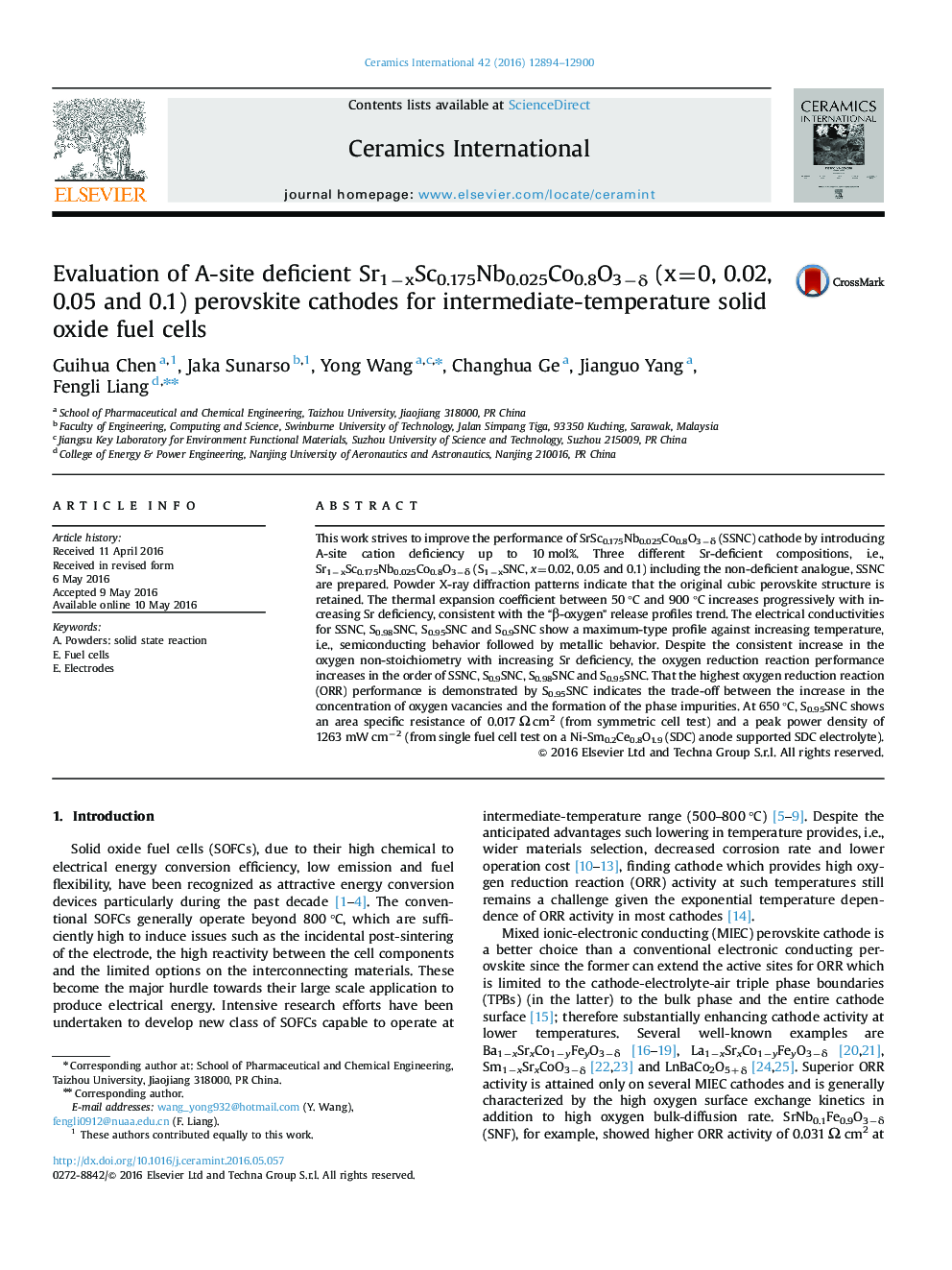| Article ID | Journal | Published Year | Pages | File Type |
|---|---|---|---|---|
| 1458736 | Ceramics International | 2016 | 7 Pages |
This work strives to improve the performance of SrSc0.175Nb0.025Co0.8O3−δ (SSNC) cathode by introducing A-site cation deficiency up to 10 mol%. Three different Sr-deficient compositions, i.e., Sr1−xSc0.175Nb0.025Co0.8O3−δ (S1−xSNC, x=0.02, 0.05 and 0.1) including the non-deficient analogue, SSNC are prepared. Powder X-ray diffraction patterns indicate that the original cubic perovskite structure is retained. The thermal expansion coefficient between 50 °C and 900 °C increases progressively with increasing Sr deficiency, consistent with the “β-oxygen” release profiles trend. The electrical conductivities for SSNC, S0.98SNC, S0.95SNC and S0.9SNC show a maximum-type profile against increasing temperature, i.e., semiconducting behavior followed by metallic behavior. Despite the consistent increase in the oxygen non-stoichiometry with increasing Sr deficiency, the oxygen reduction reaction performance increases in the order of SSNC, S0.9SNC, S0.98SNC and S0.95SNC. That the highest oxygen reduction reaction (ORR) performance is demonstrated by S0.95SNC indicates the trade-off between the increase in the concentration of oxygen vacancies and the formation of the phase impurities. At 650 °C, S0.95SNC shows an area specific resistance of 0.017 Ω cm2 (from symmetric cell test) and a peak power density of 1263 mW cm−2 (from single fuel cell test on a Ni-Sm0.2Ce0.8O1.9 (SDC) anode supported SDC electrolyte).
